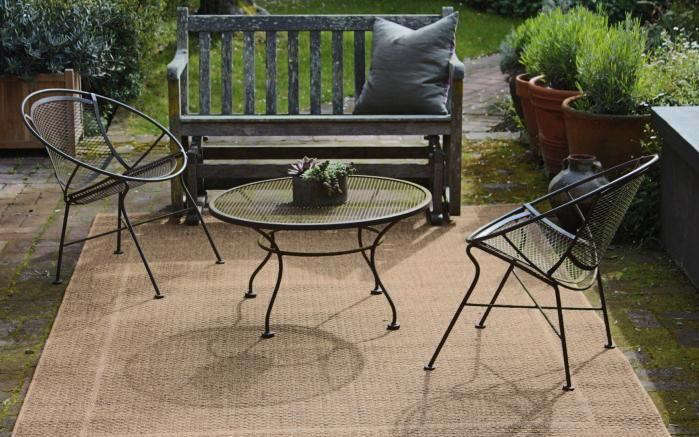With spring in swing, we’re liberating our outdoor furniture from storage–and noticing that it could use extra care and cleaning to get in shape for the season.
Here’s our guide to cleaning and caring for metal furniture. (Got wood furniture?Make sure to check out last week’s Wood Furniture Cleaning Basics).
N.B.: Featured photograph by Bethany Nauert for Gardenista, from Enchanted Garden: Whimsy and Wit at Palihouse in Santa Monica.

Furniture Covers

Resist the urge to protect your treated metal furniture with a plastic tablecloth. It can trap water, humidity, and heat that can damage the finish.
Metal Furniture Basics

Considered the most durable material for outdoor furniture, metal can last a lifetime if you take care of it properly. Most metal outdoor furniture is finished with paint, varnish, or powder coating to prevent rust. And, while aluminum doesn’t rust–hence its recommended use in areas near salt water–it can oxidize (which causes pitting and dulls the finish).

Soaps & Cleaners

Metal furniture is best cleaned with a cloth or sponge using water and mild, non-detergent soap and wiped dry. Abrasive scrubbers or cleaners should not be used as they can scratch the finish, potentially exposing the metal to rust-inducing moisture. For ingrained dirt, use window cleaner or a non-abrasive multi-purpose cleaner.
When cleaning keep an eye out for scratches or any signs of rust, especially at furniture joints. Apply touch-up paint to scratches to prevent rust. If rust or mold is present, sand the area lightly using fine-grit sandpaper and apply rust-proof touch-up paint (this may be available from the manufacturer). To remove oxidization from aluminum furniture, use a solution of equal parts of white vinegar and water; avoid alkaline cleaners as they cause oxidation.
Rust vs. Patina


Keep in mind our General Outdoor Furniture Care and Cleaning Tips:
- Always start with a light cleaning, sweeping surfaces as needed with a soft brush or cloth. Then assess if more care and cleaning is needed.
- When it comes to cleaning products, non-detergent liquid soap (think dish soap) is your friend. It will clean without harming your furniture or the environs. For tougher stains and mildew, use water and white vinegar.
- Read the manual. Unless you inherit or purchase vintage pieces, outdoor furniture should come with instructions.
- Sunscreens and bird droppings should be cleaned off as soon as possible. They can be particularly damaging and lead to permanent staining and corrosion.
- Consider covering your furniture when not in use for long periods of time (and during bouts of inclement weather). Even if it can stand up to the elements, this will extend its life and make cleaning easier after the outdoor season begins again. And, use breathable covers to avoid creating a mold incubator.
- If you live in an area with especially harsh winter weather, try storing your furniture indoors if possible.
Are you getting your outdoor space in shape for summer? For more inspiration, see:
Finally, are you planning a Decks & Patios project? Learn everything you need to know on to get started with our Hardscaping 101: Decks & Patios 101 guide.













Have a Question or Comment About This Post?
Join the conversation (5)